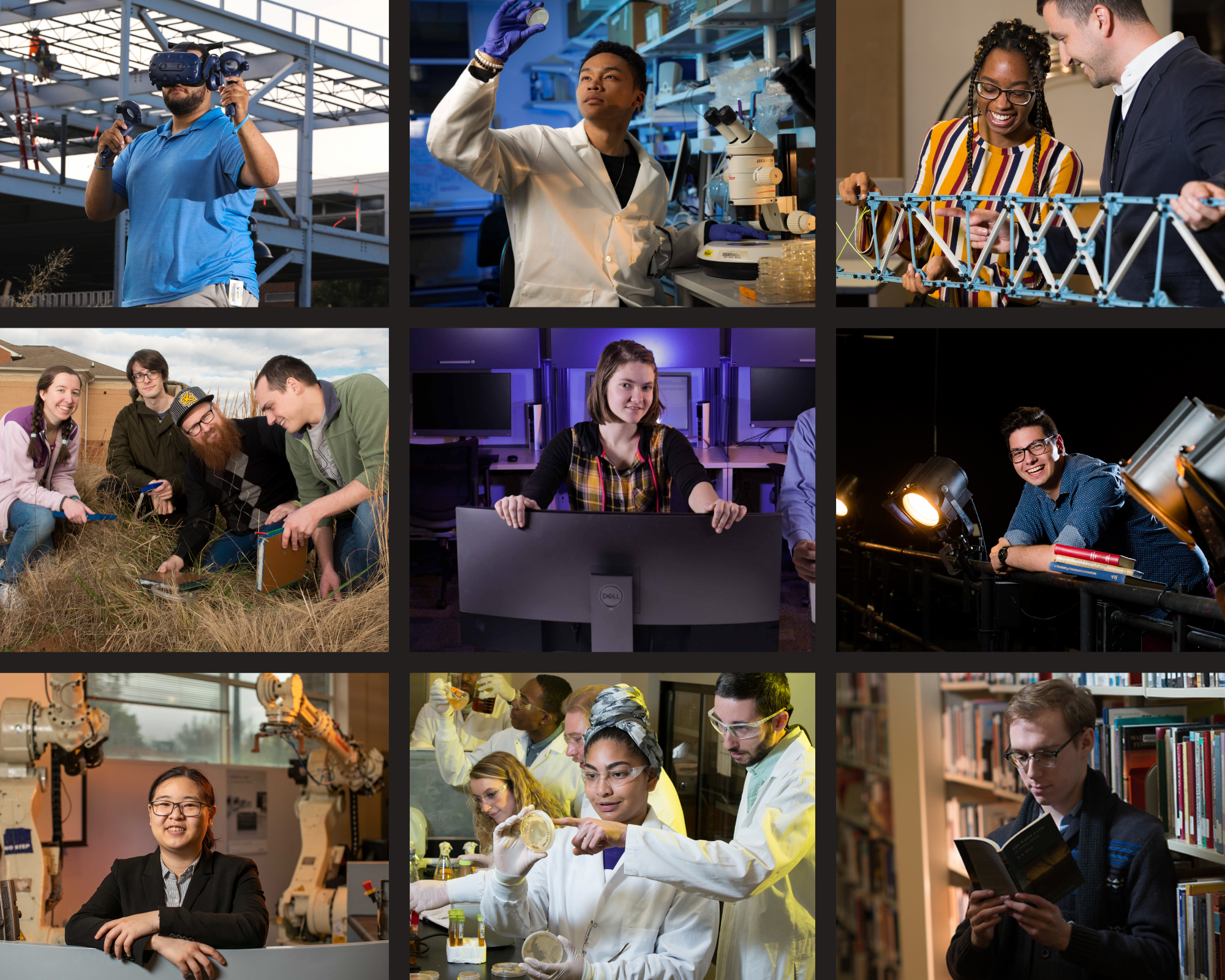Screening of MK2-Interacting Proteins in a Human cDNA Library Using a Yeast Two-Hybrid System
Disciplines
Biochemistry
Abstract (300 words maximum)
MK2 is the less understood, short isoform of a eukaryotic kinase important in the regulation of cellular processes. Its function is studied by finding the proteins it interacts with. Investigation of the protein-protein interactions of MK2 was performed in a CURE-based biochemistry lab course utilizing the Yeast Two-Hybrid methodology. This methodology uses GAL-4, which is a positive regulator of gene expression of galactose-induced genes and is comprised of a DNA binding domain (BD) and activation domain (AD) that can be separately expressed. The binding domain is fused to MK2 (bait), and the activation domain is fused to a “prey” protein that originates from a cDNA library. Yeast strain Y190 is transformed with bait plasmid, which a maxi-prep was performed to create more of, and Y187 with prey and then mated to create a diploid cell containing both proteins. If the “bait” and “prey” interact, GAL-4 will be reconstituted, bind to its promoter, and reporter genes are activated resulting in aureobasidin resistance and yeast colonies turning blue through galactosidase activity. No blue colonies were formed when binding domain-MK2 fusion protein was tested for possible autoactivation of GAL reporter genes. A positive control was made to test the system using well-known interactors p53 and T-antigen. Y190 strain expressing p53-binding domain fusion protein was mated with Y187 strain expressing activation domain-tagged T-antigen. A negative control was made to test the system using well-known non-interactors LAM and T-antigen. Y190 strain expressing LAM-binding domain fusion protein was mated with Y187 strain expressing activation domain-tagged T-antigen. These produced blue colonies and no blue colonies respectively as a result. The Y190 containing MK2-BD and Y187 containing the human cDNA library will be mated to see if reporter genes are activated. If activated, the interacting proteins will be fished out and the interactions will be further tested.
Academic department under which the project should be listed
CSM - Chemistry and Biochemistry
Primary Investigator (PI) Name
Rajnish Singh
Screening of MK2-Interacting Proteins in a Human cDNA Library Using a Yeast Two-Hybrid System
MK2 is the less understood, short isoform of a eukaryotic kinase important in the regulation of cellular processes. Its function is studied by finding the proteins it interacts with. Investigation of the protein-protein interactions of MK2 was performed in a CURE-based biochemistry lab course utilizing the Yeast Two-Hybrid methodology. This methodology uses GAL-4, which is a positive regulator of gene expression of galactose-induced genes and is comprised of a DNA binding domain (BD) and activation domain (AD) that can be separately expressed. The binding domain is fused to MK2 (bait), and the activation domain is fused to a “prey” protein that originates from a cDNA library. Yeast strain Y190 is transformed with bait plasmid, which a maxi-prep was performed to create more of, and Y187 with prey and then mated to create a diploid cell containing both proteins. If the “bait” and “prey” interact, GAL-4 will be reconstituted, bind to its promoter, and reporter genes are activated resulting in aureobasidin resistance and yeast colonies turning blue through galactosidase activity. No blue colonies were formed when binding domain-MK2 fusion protein was tested for possible autoactivation of GAL reporter genes. A positive control was made to test the system using well-known interactors p53 and T-antigen. Y190 strain expressing p53-binding domain fusion protein was mated with Y187 strain expressing activation domain-tagged T-antigen. A negative control was made to test the system using well-known non-interactors LAM and T-antigen. Y190 strain expressing LAM-binding domain fusion protein was mated with Y187 strain expressing activation domain-tagged T-antigen. These produced blue colonies and no blue colonies respectively as a result. The Y190 containing MK2-BD and Y187 containing the human cDNA library will be mated to see if reporter genes are activated. If activated, the interacting proteins will be fished out and the interactions will be further tested.
